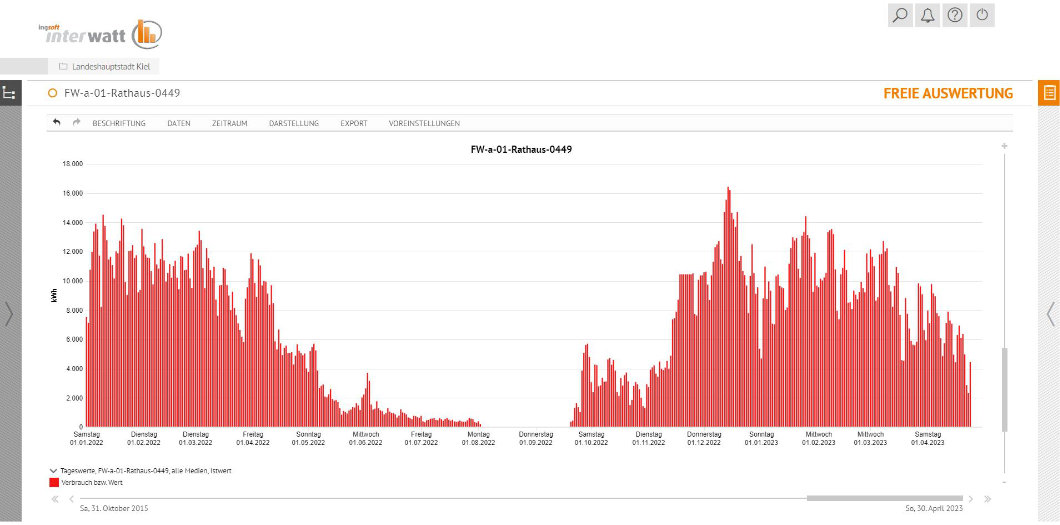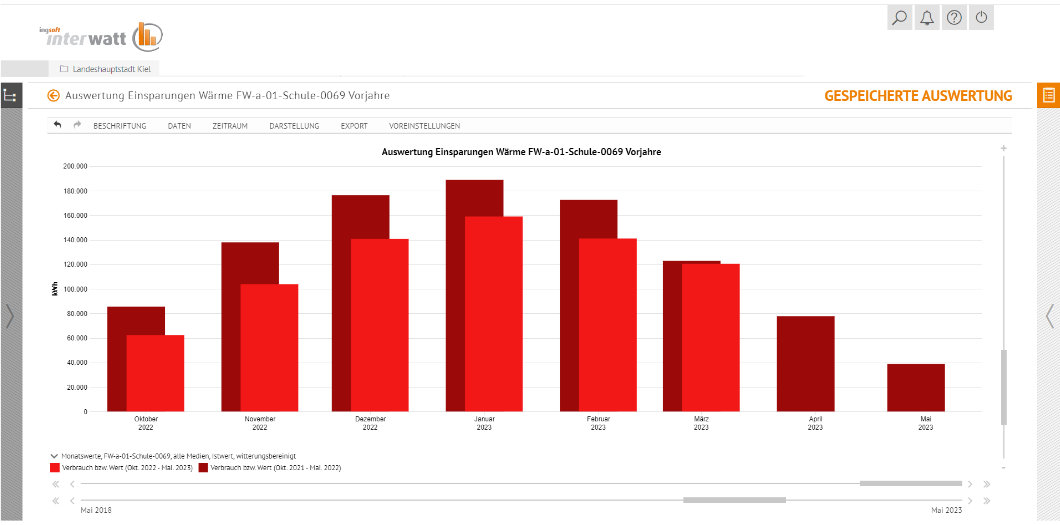Temperature regulation and continuous energy monitoring
Rarely is energy management such a focus of attention as it will be in the 2022/2023 heating period. In order to avert an imminent emergency situation in the energy supply, the German government introduced an energy-saving ordinance at short notice last year. This includes stricter requirements for the temperature in workplaces. In addition, local authorities and energy-intensive companies in particular had a responsibility to reduce their energy consumption more. For many energy managers, this opened up decision-making scope for exploring new energy management measures. The city of Kiel, for example, was also able to realise additional energy savings through further optimisation measures.
We spoke with Markus Noldin and Jan Scheer, energy managers at the city of Kiel, about temperature regulation, lowering the heating at night and continuous energy monitoring. They reveal the organisational and other temperature reductions with which the municipality has achieved average energy savings of between 15 and 20 per cent, what part our software IngSoft InterWatt has contributed to this in this, and what their future plans are for energy management in Kiel.
Intensifying existing energy management in municipalities: What we can learn from the energy crisis
Faced with an impending energy shortage, the city of Kiel decided last fall to take a new approach to energy management. Markus Noldin looks back: "Common measures, such as lowering the heating at night, have always been an integral part of our existing energy management. With the start of the last heating period, however, measures such as temperature reductions or partial reductions have once again moved more closely into our focus. One of the key factors in this decision was the fact that two of our large school centers are heated purely with gas. In view of the impending gas shortage and the short- and medium-term energy regulations, including those on temperature reductions, we therefore decided to implement further measures that we had simply not dared to take until then in view of the possible negatively perceptible effects for the users of the buildings. In this way, we experienced that energy can still be saved in very many places – and that, in light of the serious situation, even schools that were actually exempt from the energy regulations approached us and asked for advice on how they could implement further energy savings. So we came up with coordinated measures in dialogue with the users, without the users having to accept too many cuts."
As a simple example, the two energy managers tell us about a ventilation heating system in an administrative building that used to run even in the summer months to prevent cold drafts. Without further ado, they decided to switch off the system for around 40 days – with measurable effect: "Just by our colleague going down to the basement twice to switch the system off and on, we saved around 1,200 euros," explains Jan Scheer.

In the end, up to 20 per cent energy savings in administrative buildings
Markus Noldin and Jan Scheer not only achieved the 20 per cent final energy savings required in the city of Kiel's administrative buildings for the 2022/2023 heating period, they even exceeded them in some cases. The decisive factor here was measures that were easy to implement:
- Heating systems were put into operation later depending on the outdoor temperatures.
- The heating temperature of the administrative buildings was reduced by 1°C to the specified 19°C.
- Heating times per day were shortened, i.e. heating systems went into night setback earlier (the presumed end of working hours was set earlier)
- Temperature setback took place on weekends and during vacations
- Building users were made aware of energy efficiency
Energy monitoring based on hourly values
Markus Noldin and Jan Scheer are not resting on their laurels: In the coming weeks and months, they will devote themselves to further analyses in order to further expand energy efficiency in the properties of the City of Kiel.
Markus Noldin uses the example of Kiel's schools to illustrate where there is still potential for improvement. At around 80 per cent, they account for the largest heat demand in the municipality. "In some schools in Kiel, the weekend reduction works very well; the evaluation clearly shows a reduction to 20 per cent of the weekly value. Again, at others this is not the case. In the past, they were able to identify such outliers, for example, when users had not turned down thermostatic valves or a janitor had inadvertently not turned down a building wing in a school. The next step is to conduct more in-depth analyses to identify other, sometimes more complex, factors that influence unnecessary additional consumption. These could be building envelopes, heating systems or similar.

They see the switch to automatic data collection as a major advantage: Around 90 per cent of the energy data in the heating sector in Kiel is now collected using LoRaWAN meters. Their consumption values are then automatically recorded in IngSoft InterWatt. Consumption recording is not only more convenient because it eliminates the need for time-consuming coordination with the various people reading the meters on site. It is also significantly more informative: Whereas previously only monthly or annual evaluations were conceivable, a targeted analysis based on hourly values is now possible.
How Kiel benefits from IngSoft InterWatt
With the digitalisation of the meter reading, the data is now available for targeted analyses, which can be created in IngSoft InterWatt at the push of a button. This represents an enormous work saving for the two energy managers from Kiel: "If we didn't have the software and created the evaluations with Excel, I would be permanently busy calculating. With IngSoft InterWatt, the results are available immediately. Evaluations and comparisons can thus also be created at short notice in meetings and used, for example, as a basis for decisions on investments," Jan Scheer summarises.
In addition, IngSoft InterWatt can also be used to automatically monitor consumption. Markus Noldin and Jan Scheer now want to make ever greater use of this: "After all, we can't check our 120 properties individually every morning," explains Markus Noldin. With AI-based pattern recognition and limit monitoring in IngSoft InterWatt, outliers can be detected automatically. Those responsible are notified by the software when anomalies occur.
In addition, the two energy managers would like to create automated reports for the respective building users in the future, on the one hand to raise awareness of energy consumption and on the other hand to motivate further savings. They are already achieving good results at some schools with such reports, which have so far been prepared manually: In the winter months, teacher initiatives have already been formed there that have taken up the cause of saving energy.



